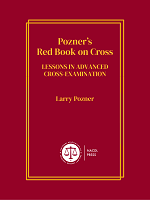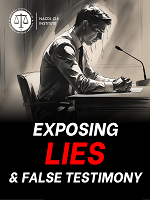- Maryland allows for parole, although certain types of violent or recidivist offenders are excluded.
- Maryland allows discretionary LWOP and JLWOP. See Md. Code Ann., Crim. Law §§ 2-202, 2-203, 2-304
- No minimum age for the transfer of a juvenile to adult court.
State Constitution
Md. Dec. of R. art. 16 (2012)
Article 16. Sanguinary laws to be avoided; cruel and unusual punishment
That sanguinary Laws ought to be avoided as far as it is consistent with the safety of the State; and no Law to inflict cruel and unusual pains and penalties ought to be made in any case, or at any time, hereafter.
Md. Dec. of R. art. 25 (2012)
Article 25. Excessive bail, fines and punishment
That excessive bail ought not to be required, nor excessive fines imposed, nor cruel or unusual punishment inflicted, by the Courts of Law.
NOTE: Articles 16 and 25 of the Maryland Declaration of Rights do not grant broader rights than the Eighth Amendment.
Sentencing Statutes
- Sentencing Guidelines System – The Maryland Sentencing Guidelines
Maryland’s guidelines system is voluntary. Judges may depart from a guidelines sentence, but must document the reason for the departure on the guidelines worksheet. Code of Maryland Regulations 14.22.01.05(A). A defendant may not appeal a departure. The guidelines are available at: https://msccsp.org/Guidelines/
-
Habitual Offender Statute – Md. CRIMINAL LAW Code Ann. § 14-101:
(c) Fourth conviction of crime of violence. --
(1) Except as provided in subsection (g) of this section, on conviction for a fourth time of a crime of violence, a person who has served three separate terms of confinement in a correctional facility as a result of three separate convictions of any crime of violence shall be sentenced to life imprisonment without the possibility of parole.
(2) Notwithstanding any other law, the provisions of this subsection are mandatory.
Case Law
General
An issue is waived if a party fails “to discuss or specifically argue an issue in briefs or oral argument, or to set forth the authority for a proposition.” Oken v. State, 378 Md. 179, 186 (Md. 2003).
Maryland inflicts punishment in order to “promote the essential purposes of public justice.” Terrible crimes ought to be met with punishment that will check, if not prevent, their commission. Thomas v. State, 333 Md. 84, 93-97 (Md. 1993); see Dutton v. State, 123 Md. 373, 384-386 (Md. 1914).
State Constitution
Article 25 of the Maryland Declaration of Rights is directed at action by the courts, while Article 16 of the Maryland Declaration of Rights is directed toward legislative action. Thomas v. State, 333 Md. 84, 92 (Md. 1993).
Articles 16 and 25 of the Maryland Constitution are in pari material with the Eighth Amendment, and therefore should be discussed together. Brooks v. State, 104 Md. App. 203, 213 (Md. Ct. Spec. App. 1995).
"Because the prevailing view of the Supreme Court recognizes the existence of a proportionality component of the Eighth Amendment, we perceive no difference between the protection afforded by that Amendment and by the 25th Article of our Declaration of Rights." Thomas v. State, 333 Md. 84, 103 n. 5 (Md. 1993); Thomas v. State, 98 Md. App. 580, 581 (Md. Ct. Spec. App. 1993).
The following cases mention both the Maryland constitutional provisions and the Eighth Amendment, but do not provide any significant, separate analysis of those state provisions:
- State v. Stewart, 368 Md. 26, 33 (Md. 2002) –
- State v. Bolden, 356 Md. 160 (Md. 1999) –
- Minor v. State, 313 Md. 573, 584 (Md. 1988) –
- Tichnell v. State, 287 Md. 695, 729 (Md. 1980) –
Proportionality
Proportionality is a requirement of Article 25 of the Maryland Declaration of Rights, as well as the Eighth Amendment. While punishments need not be perfectly proportioned to the offense, gross disproportionality is prohibited. Epps v. State, 333 Md. 121, 126-127 (Md. 1993).
As long as a punishment conforms “with the basic concept of human dignity” and is neither “cruelly inhumane nor disproportionate,” there is no violation of Articles 16 and 25 of the Maryland Declaration of Rights. Phipps v. State, 39 Md. App. 206, 211 (Md. Ct. Spec. App. 1978).
Because sentencing decisions require many considerations, stringent and rigid standards for proportionality reviews are inappropriate. The sentencing court is “virtually always better informed of the particular circumstances” of a sentencing decision, and appellate courts should rarely interfere with such a decision. Thomas v. State, 333 Md. 84, 93-97 (Md. 1993).
When looking for gross disproportionality, the court considers the specific facts of the offense in addition to the elements of the offense. Proportionality is measured by comparing the sentence with the behavior of the offender and the consequences of his actions. Epps v. State, 333 Md. 121, 126-127 (Md. 1993).
Simply because a lengthy prison sentence may be disproportionate for most assault convictions does not mean that would be grossly disproportionate for all assault convictions. No bright-line formula is available: proportionality cannot be litigated in the abstract, but must be assessed on a case-by-case basis. Thomas v. State, 333 Md. 84, 93-97 (Md. 1993) (citing Walker v. State, 53 Md. App. 171 (Md. Ct. Spec. App. 1982)).
In addressing a proportionality challenge, a court must first determine whether the sentence is grossly disproportionate to the offense. The court should look to the seriousness of the offender’s conduct, the seriousness of relevant past conduct (recidivism), “any articulated purpose supporting the sentence, and the importance of deferring to the legislature and to the sentencing court.” Thomas v. State, 333 Md. 84, 93-97 (Md. 1993).
If the above factors do not lead to a suggestion of gross disproportionality, the proportionality review is complete. If, however, the factors lead to a suggestion of gross disproportionality, the court should engage in a detailed “Solem-type” analysis. Thomas v. State, 333 Md. 84, 93-97 (Md. 1993). The court should remember that under the principles of federalism, the Maryland legislature may choose to enact more severe penalties than other states. Id.
A reviewing court may also consider other relevant factors, such as the ramifications of the offense on society, any improper motive on the part of the sentencing judge, or the penological theory of Maryland. Thomas v. State, 333 Md. 84, 93-97 (Md. 1993).
Even where the law provides a sentencing range or sentencing limits, a sentence may still violate Article 25. If the statutory punishment is grossly disproportionate to the offense “so that the sentence is evidently dictated not by a sense of public duty, but by passion, prejudice, ill-will or any other unworthy motive,” the sentence is improper. Thomas v. State, 333 Md. 84, 93-97 (Md. 1993) (citing Mitchell v. State, 82 Md. 527, 533-34, 34 A. 246 (1896)); see Brooks v. State, 38 Md. App. 550, 554-555 (Md. Ct. Spec. App. 1978); Washington v. State, 2 Md. App. 633 (Md. Ct. Spec. App. 1967).
Citations to Graham
Maryland courts have not cited to Graham













